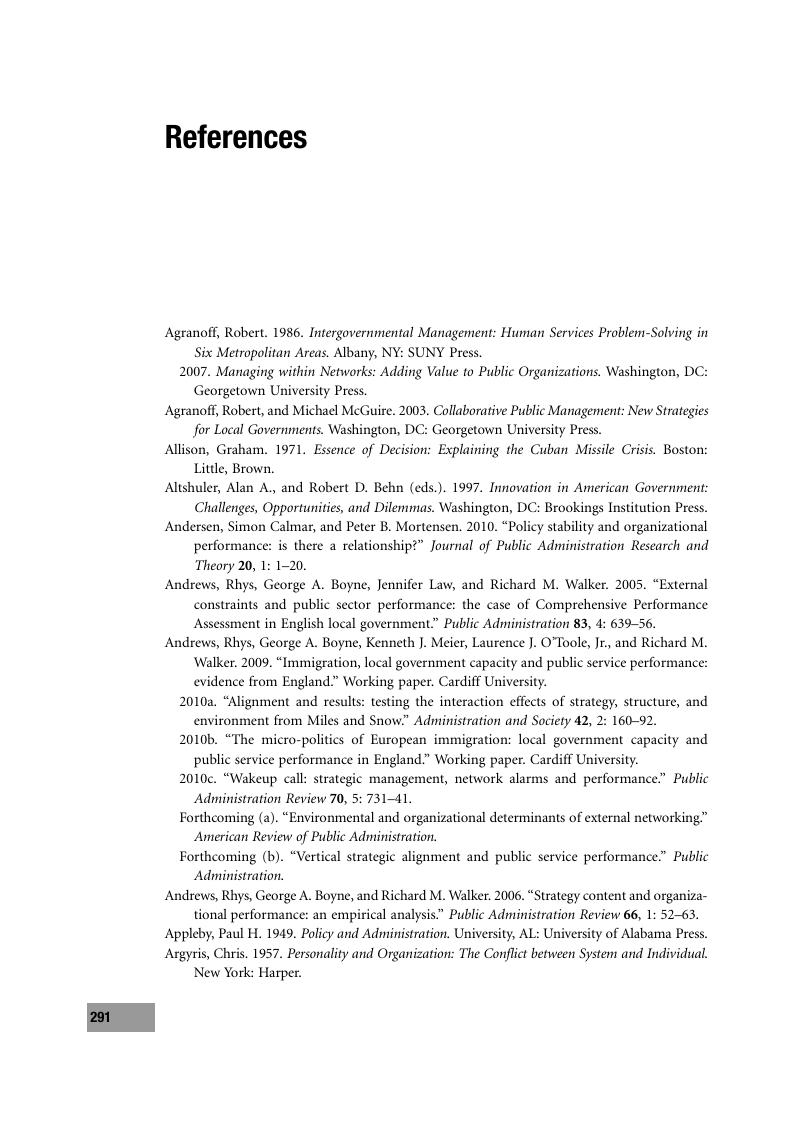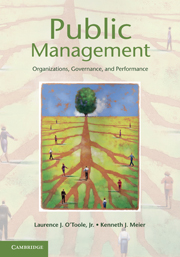Book contents
- Frontmatter
- Contents
- List of figures
- List of tables
- Preface
- 1 Public management and performance: an evidence-based perspective
- 2 A model of public management and a source of evidence
- 3 Public management in interdependent settings: networks, managerial networking, and performance
- 4 Managerial quality and performance
- 5 Internal management and performance: stability, human resources, and decision making
- 6 Nonlinearities in public management: the roles of managerial capacity and organizational buffering
- 7 Public management in intergovernmental networks: matching structural networks and managerial networking
- 8 Public management and performance: what we know, and what we need to know
- Glossary
- References
- Index
- References
References
Published online by Cambridge University Press: 05 June 2012
- Frontmatter
- Contents
- List of figures
- List of tables
- Preface
- 1 Public management and performance: an evidence-based perspective
- 2 A model of public management and a source of evidence
- 3 Public management in interdependent settings: networks, managerial networking, and performance
- 4 Managerial quality and performance
- 5 Internal management and performance: stability, human resources, and decision making
- 6 Nonlinearities in public management: the roles of managerial capacity and organizational buffering
- 7 Public management in intergovernmental networks: matching structural networks and managerial networking
- 8 Public management and performance: what we know, and what we need to know
- Glossary
- References
- Index
- References
Summary

- Type
- Chapter
- Information
- Public ManagementOrganizations, Governance, and Performance, pp. 291 - 308Publisher: Cambridge University PressPrint publication year: 2011

